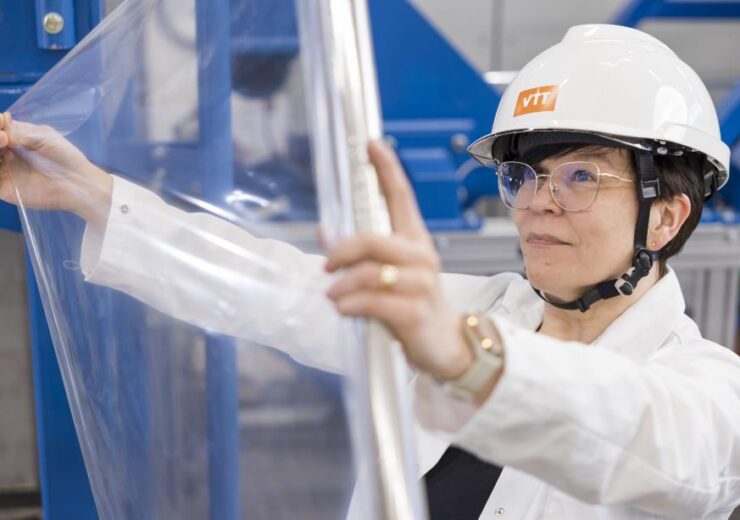VTT believes that regenerated or recrystallised cellulose can replace plastic films, which are difficult to recycle and end up in the wrong places after use

VTT is currently piloting a new transparent cellulose film that reduces microplastic. (Credit: VTT Technical Research Centre of Finland Ltd.)
VTT Technical Research Centre of Finland has developed a transparent cellulose film that replaces traditional plastic in food packaging.
The research centre is currently piloting a new transparent cellulose film that reduces microplastic.
VTT believes that regenerated or recrystallised cellulose can replace plastic films, which are difficult to recycle and end up in the wrong places after use.
VTT research professor Ali Harlin said: “We can produce transparent and flexible cellulose film. The consumer cannot distinguish between the crystal-clear material and traditional oil-based plastic.
“Cellulose film can resist dampness, but in nature, it disappears as completely as a sheet of paper does. The product is biobased and biodegradable.”
VTT stated that plastics allow consumers to see the product apart from protecting it, but once they have been used, many packages are sources of problems.
When a package has paper and plastic, the consumer may get confused if it can be recycled with cardboard, or if the plastic needs to be torn off first.
Several packages are placed among mixed waste by people who cannot think of a better way of disposing of it. Plastic that lands in a cardboard recycling bin can be eliminated, but the plastic usually ends up incinerated, said VTT.
VTT biomaterial processing and products vice president Atte Virtanen said: “The cellulose film developed by VTT can replace plastic as a more climate-friendly solution. It also makes recycling easy, as it can be placed in cardboard recycling along with other packages.”
Virtanen added: “VTT has researched cellulose films for more than ten years, and for more than six years on regenerated cellulose in transparent films.”
The packaging material could be in extensive industrial use in five to seven years.
